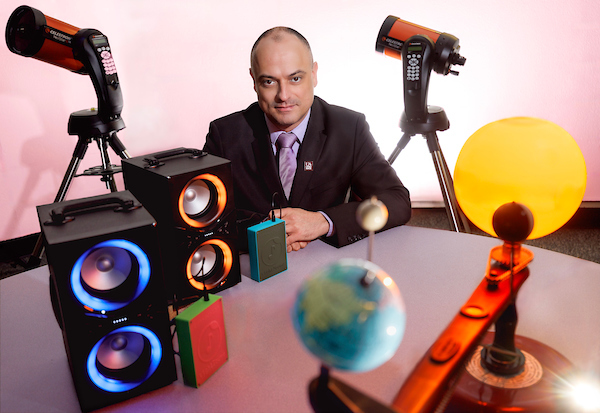UA Little Rock to Participate in Cross-Country Solar Eclipse Research Project to Investigate Eclipse Wind

The University of Arkansas at Little Rock is embarking on an exciting journey of scientific exploration as it joins a groundbreaking cross-country research project aimed at unraveling the mysteries of the eclipse wind during the total solar eclipse on April 8.
Dr. David Horne, assistant professor of physics at Gannon University, a Catholic university located in Erie, Pennsylvania, will be leading a research experiment to ascertain the existence of the eclipse wind and other atmospheric effects caused by the passage of the moon’s shadow during a total solar eclipse.
“Reduced light levels from the sun and the associated drop in local temperature and pressure may result in the setup of convection currents in the atmosphere producing an effect known as the eclipse wind,” Horne said. “You find a lot of people report feeling a breeze during a solar eclipse. Do they actually feel a breeze, or do they feel a temperature change that comes with the sunlight being blocked? There have been experiments that say eclipse wind exists, and those that say it doesn’t. It’s great that we are getting data from as many locations as possible.”
The weather-observation experiment consists of using an anemometer/atmospheric sensor package to collect data at locations in the path of totality during the April 8 total solar eclipse. These devices are being distributed to academic research partners across the country as well as one in Niagara Falls, Canada, to measure the effects of solar eclipse as it progresses across North America.
UA Little Rock is the only academic research partner from Arkansas participating in the experiment. Dr. Gregory Guisbiers, associate professor of physics, and a few of his physics students will be using a device provided by Gannon University to collect data such as wind speed, wind direction, pressure, humidity, temperature, and light level.
“By collecting data for Dr. Horne’s project, we are investigating potential atmospheric effects of the passage of totality across the nation,” Guisbiers said. “We are doing science, and we are contributing to better understand the world we live in. This is so exciting to be part of this multi-state project that involves collaborators in Texas, Arkansas, Missouri, Indiana, Pennsylvania, and New York.”
Erie is the largest city in Pennsylvania to be in the path of totality for the solar eclipse on April 8. In addition to the experiment, Horne is also organizing a solar eclipse celebration that will span three public sites in order to help the public experience the three minutes and 42 seconds of totality. Horne plans to publish the results of the experiments in conference proceedings, publications, and presentations.
“I’m also hoping to give some public talks, especially to those who participated in the experiment so they can see the tangible results of their efforts,” Horne said. “I’m so grateful to UA Little Rock and the other sites for their enthusiastic response and jumping in on the experiment.”
